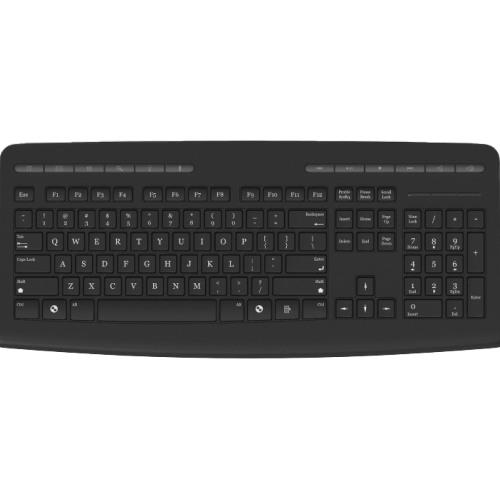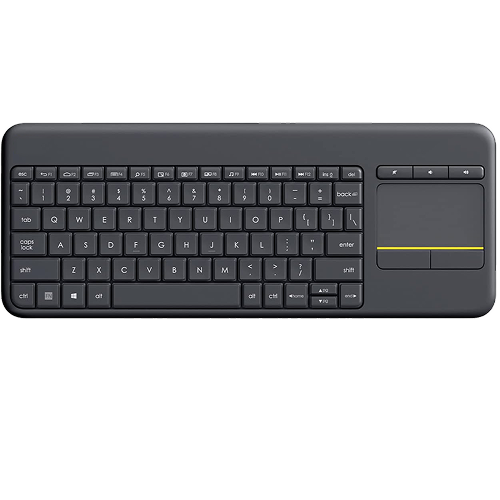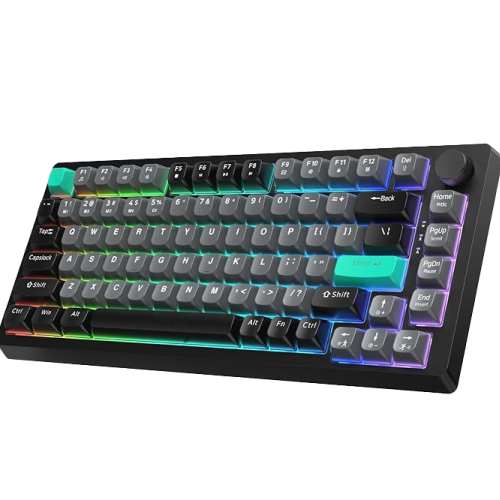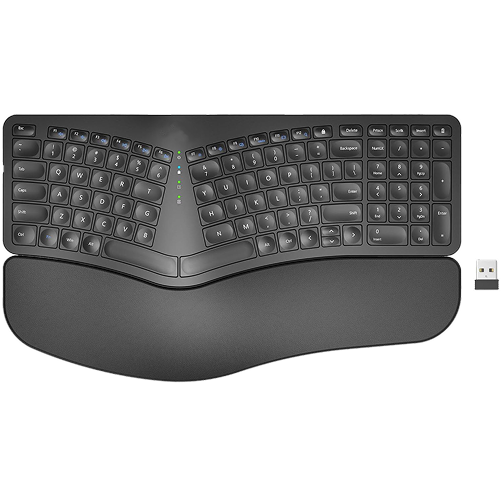Ergonomic keyboards are built to reduce strain on your wrists, arms, and shoulders by positioning your hands more naturally. Instead of a flat, standard design, these keyboards often feature curves, splits, and tilts that promote comfort during long typing sessions.
This guide explains the most important features, highlights top picks, and provides a clear comparison so you can choose confidently.
Unique Features of Ergonomic Keyboards
Ergonomic keyboards stand apart from standard models because of design elements that directly affect body posture. The first and most noticeable is the split layout, where the board is divided into two sections so each hand works independently. This spacing keeps arms aligned with shoulders, limiting awkward wrist bending. Some models are physically separated into two halves, while others mimic the effect with a fixed V-shape frame.
A second hallmark is tenting, where the center of the keyboard is raised so palms angle inward slightly. This reduces the twisting motion of the forearms, which can otherwise cause fatigue. Many keyboards include adjustable feet or add-on kits to let you set the tent angle that feels most natural.
Another feature is the curved or contoured frame. Keys may be arranged in arcs or wells that match the reach of your fingers. This reduces sideways stretching, making typing motions smoother and more relaxed. High-end models with deep key wells take this to an extreme, while more modest boards may use a gentle curve.
Some keyboards adopt an ortholinear grid rather than the traditional staggered layout. This means keys are aligned in straight vertical and horizontal rows. It can make finger movement more consistent, though it requires a learning curve for users accustomed to staggered rows.
Additional refinements include thumb clusters, which place larger or more frequently used keys under the thumbs to reduce reliance on weaker fingers. Finally, many ergonomic keyboards include wrist rests (built-in or detachable) to keep wrists flat instead of bent upward.
Key Specs & Features Explained
Beyond shape and layout, technical specifications define how a keyboard performs. These are some features worth understanding before buying:
Switch Technology
This determines feel and durability. Mechanical switches use springs and stems, delivering crisp response and long life, often lasting tens of millions of presses. Scissor switches, often found in laptops, provide a low-profile and relatively quiet option that is more durable than basic domes. Membrane switches rely on rubber pads, making them inexpensive and quiet but typically less durable and less precise.
Switch Feel
Switch feel describes the sensation when pressing a key. Linear switches move smoothly without tactile bumps, ideal for fast gaming. Tactile switches include a bump to indicate actuation, improving accuracy for many typists. Clicky switches add a distinct audible click for those who enjoy audible feedback, though they can be distracting in shared spaces.
Key Rollover
This measures how many simultaneous key presses can be registered. The best boards offer full N-key rollover, meaning every press is detected. Six-key rollover is acceptable for casual typing but can frustrate during gaming or high-speed work.
Build Materials
The build affects durability and typing stability. Frames made of aluminum or steel provide strength and weight that prevent bending. Plastic is lighter and cheaper but often less sturdy, though some hybrid designs combine both.
Connectivity
This refers to how the keyboard links to your devices. Wired USB ensures the most reliable performance, while wireless options free up desk space. Many premium boards offer dual or tri-mode, allowing both wired and wireless connections. Bluetooth pairing across multiple devices is especially useful for people who switch between computers, tablets, or phones.
Battery Life
The battery life matters if you go wireless. Top-tier models last dozens of hours or even weeks per charge, while budget options may run down in less than a day if backlighting is enabled. Checking real-world usage figures is important, not just the advertised maximum.
Backlighting
This ranges from single-color to full per-key RGB. It can be practical for working in dim rooms or appealing for personal style, but it does not improve ergonomics directly.
Media Controls
These buttons provide quick access to volume, play, and pause. Dedicated knobs or buttons are convenient, especially for people who use their keyboards while consuming media, though they are not critical.
Programmable Keys
These keys allow custom shortcuts or macros. Gamers, content creators, and power users may find these indispensable, while everyday users may never touch them.
Ortholinear Layouts
Ortholinear layouts appeal to enthusiasts who want finger movements in straight lines rather than staggered rows. They are rare but can improve comfort for those willing to adapt.
Wrist Support
This is a subtle but valuable feature. Padded palm rests relieve pressure and help maintain neutral positioning. Without them, wrists often bend uncomfortably upward.
Must-Have Features
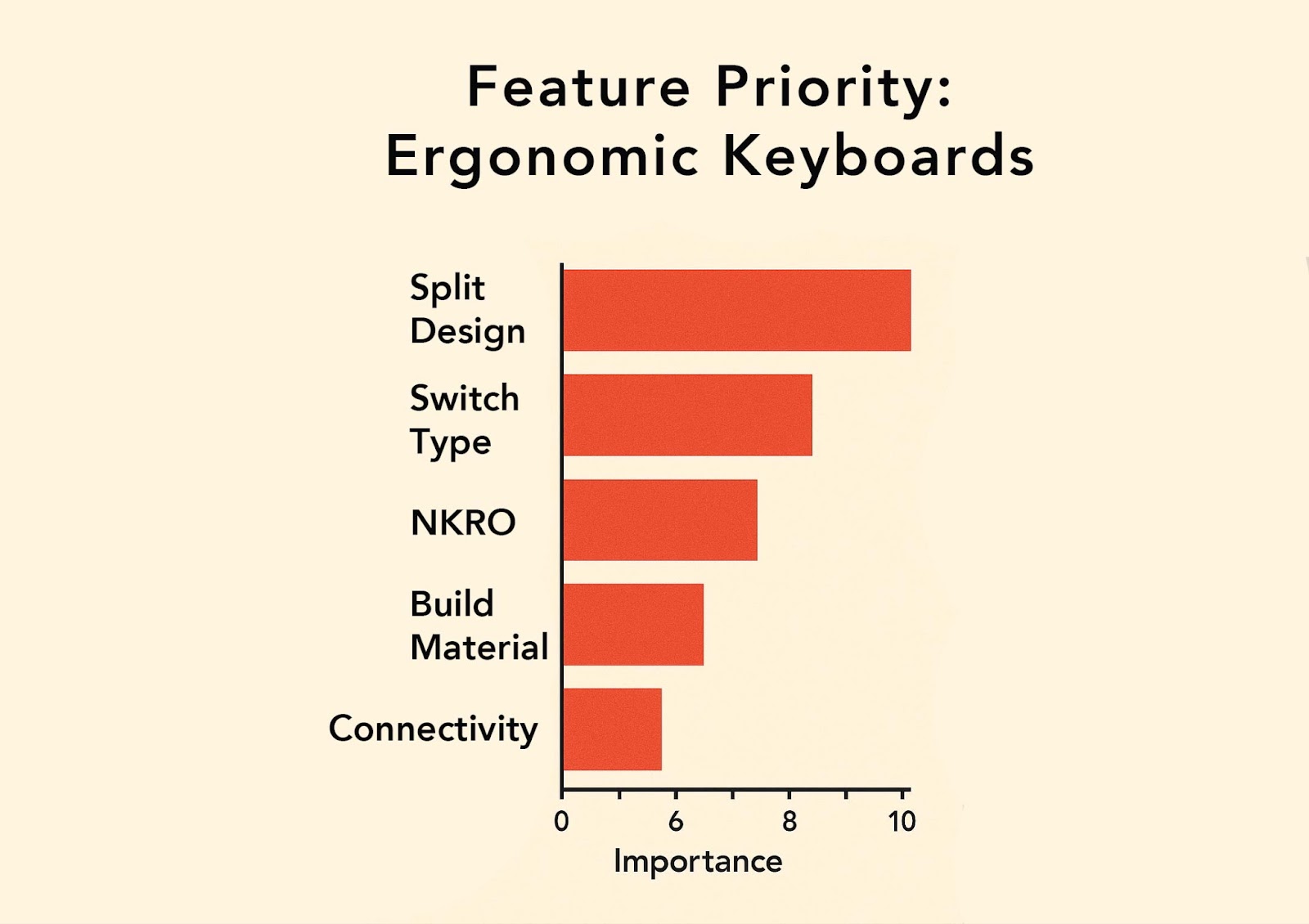
Certain features define whether an ergonomic keyboard is genuinely worth the investment.
- A split or curved layout is essential. Without a design that repositions your hands, the product does little to reduce strain. Whether it is a full separation or a molded curve, this is the baseline requirement.
- Quality switches are also non-negotiable. Mechanical switches stand out for durability and consistent performance, though scissor mechanisms can suffice for compact or quiet setups. Pure membrane boards rarely deliver the feel or longevity serious users need.
- Reliable rollover ensures that every press is captured. Full N-key rollover is ideal, while six-key is acceptable only for light use.
- A solid frame is important for long-term use. Metal or reinforced plastic prevents wobble and gives the keyboard a stable, premium feel.
- Versatile connectivity has become a standard expectation. Being able to switch between wired and wireless modes provides flexibility for different environments and ensures that the keyboard remains usable even if the battery runs low.
- Finally, a supportive wrist rest makes a major difference. Whether attached or detachable, it keeps wrists neutral and prevents unnecessary extension.
Nice-to-Have Features
Some features are desirable but not critical.
- Tenting adjustment is useful for fine-tuning wrist and arm angles. Many users appreciate the extra comfort, but those without wrist issues can manage with a fixed angle.
- Curved key wells add comfort by matching finger reach more closely, though they are not essential if the keyboard already includes a proper split.
- Backlighting is convenient in dark environments and attractive for personalizing setups. Its main drawback is faster battery drain in wireless models.
- Macro programmability appeals to specific groups such as gamers or professionals working with repetitive commands. For most, it is optional.
- Dedicated media keys save time but can be replaced with function shortcuts.
- High-grade keycaps, particularly PBT with double-shot legends, enhance longevity and texture. While valuable, they are not a must for comfort.
- Ortholinear layouts are interesting for enthusiasts but not necessary for ergonomic benefits.
Other extras such as USB pass-throughs or onboard profile memory provide convenience but should not drive your decision.
Recommended Models
Here are suggested keyboards across three categories.
Flagship/Top-Tier:
- Kinesis Advantage360: A deeply contoured split board with thumb clusters, tenting, and mechanical switches. It offers both wired and wireless modes, customizable lighting, and strong build quality.
- Dygma Raise 2: A modern split keyboard with wireless capability, mechanical low-profile switches, aluminum reinforcement, and RGB. Its updated design improves battery life and firmware stability.
Productivity/Professional Models:
- Logitech ERGO K860: A curved frame with scissor switches, wireless connectivity, and a comfortable wrist rest. It is quiet, lightweight, and approachable for office use.
- Kinesis Freestyle Pro: A true split mechanical keyboard with Cherry MX switches, optional tenting kits, and full programmability.
Budget-Friendly/Value Options:
- Logitech Wave Keys: Compact with a wave-shaped frame, palm rest, and quiet rubber domes. Wireless and budget-friendly.
- Kinesis Freestyle2: A wired split design with optional accessories for tenting and rests. Inexpensive and straightforward.
- Arteck Ergonomic Split: A low-cost option with a fixed split and dome switches. Build quality is basic, but it introduces ergonomic spacing.


